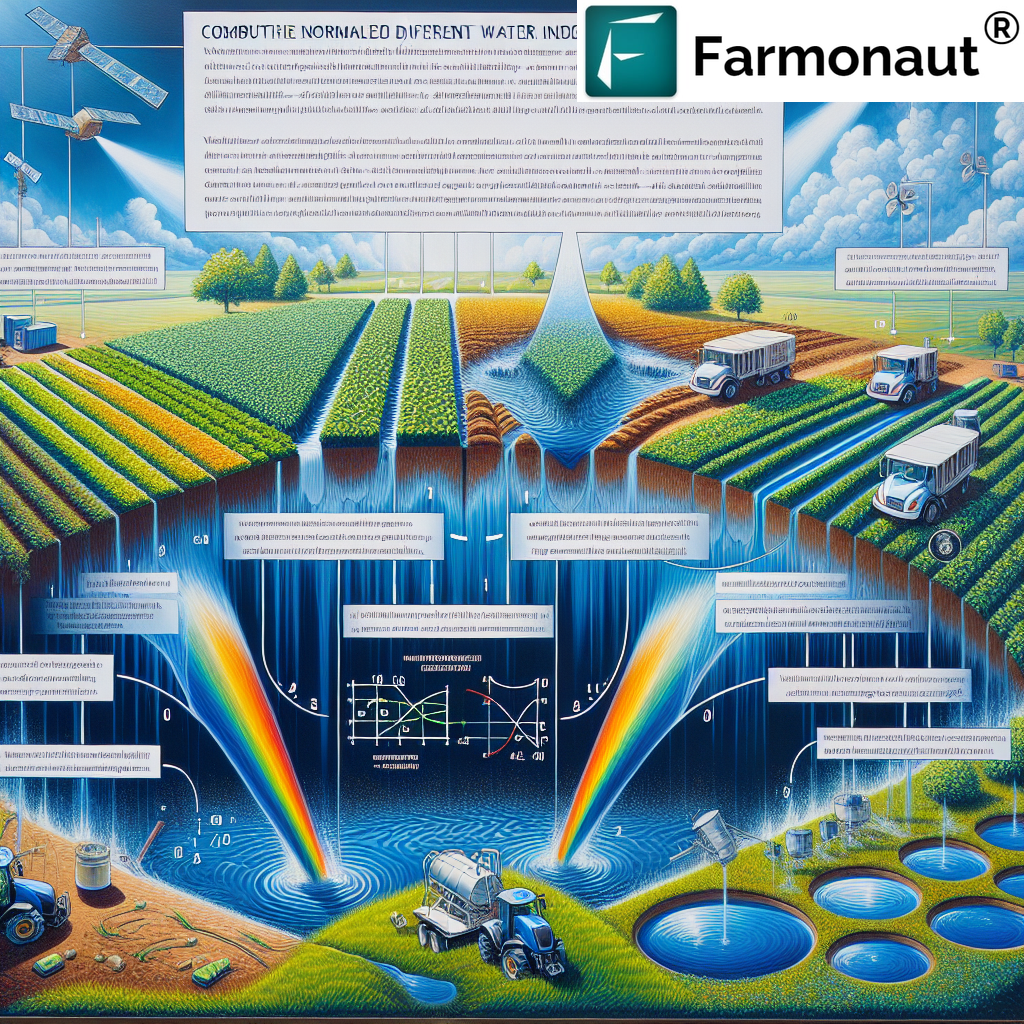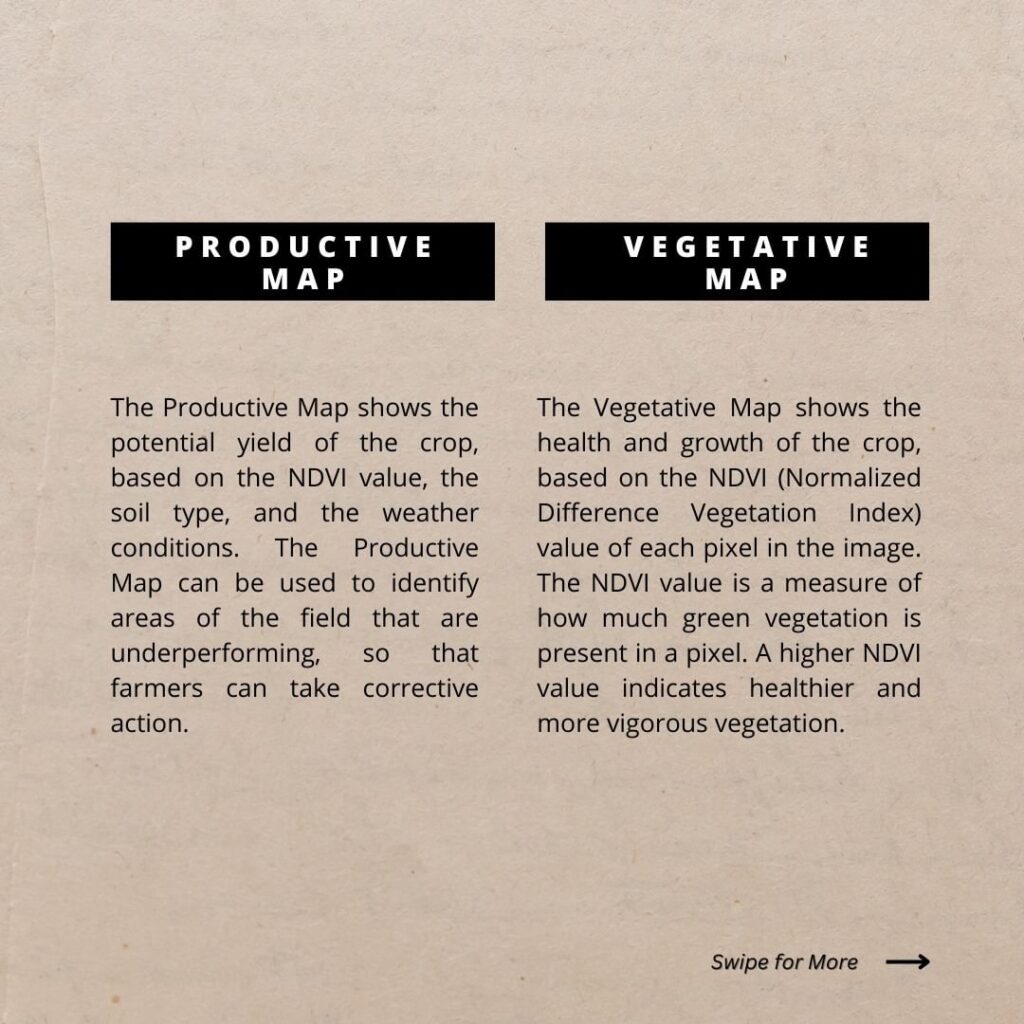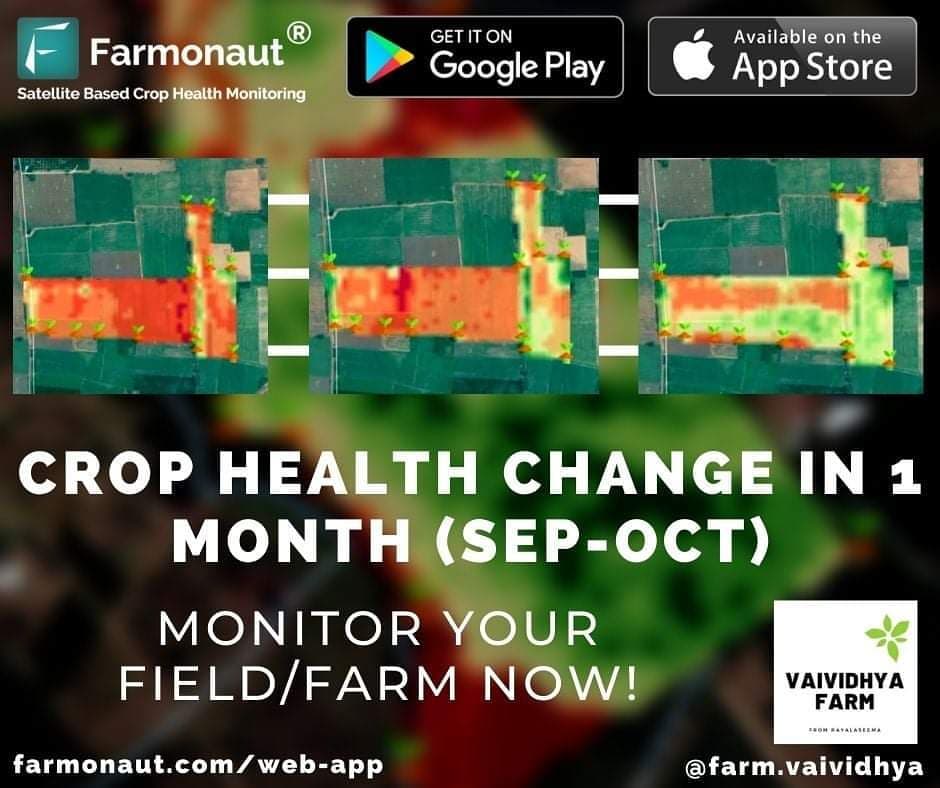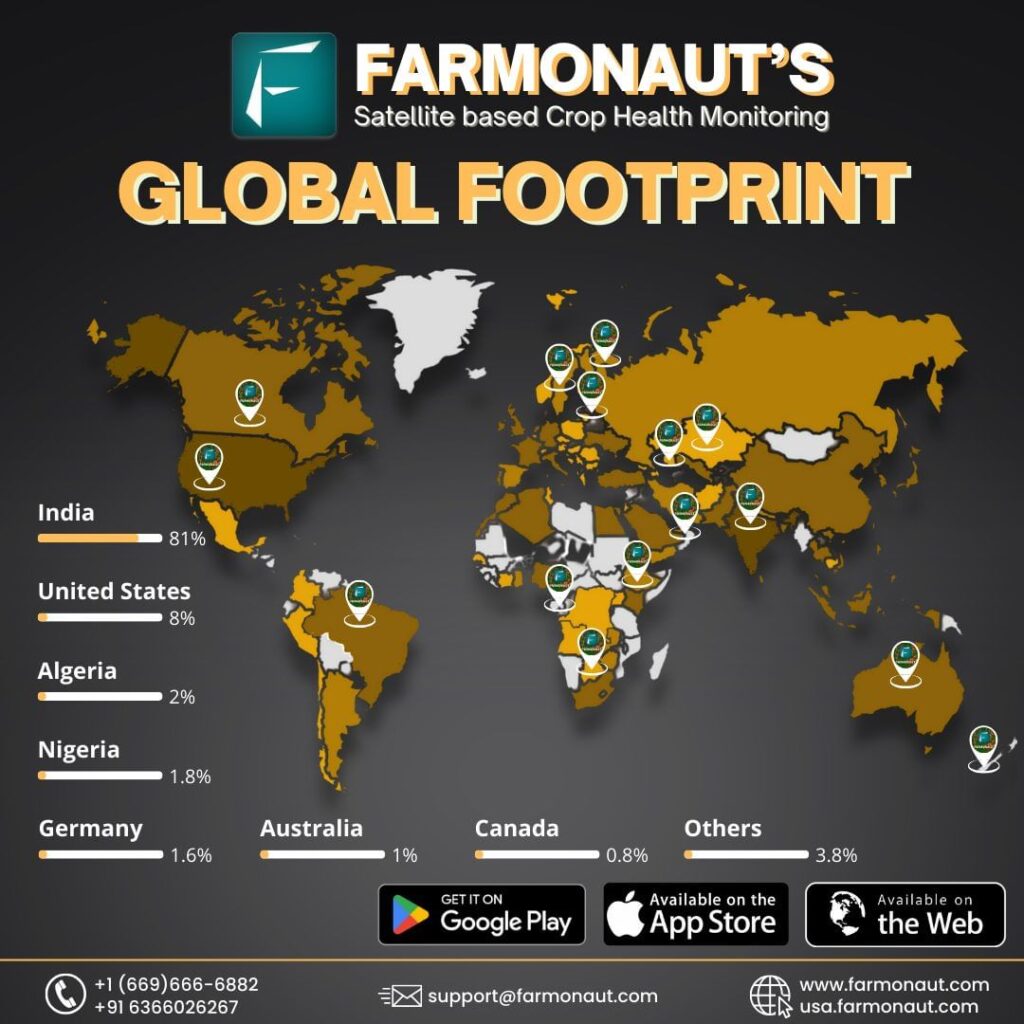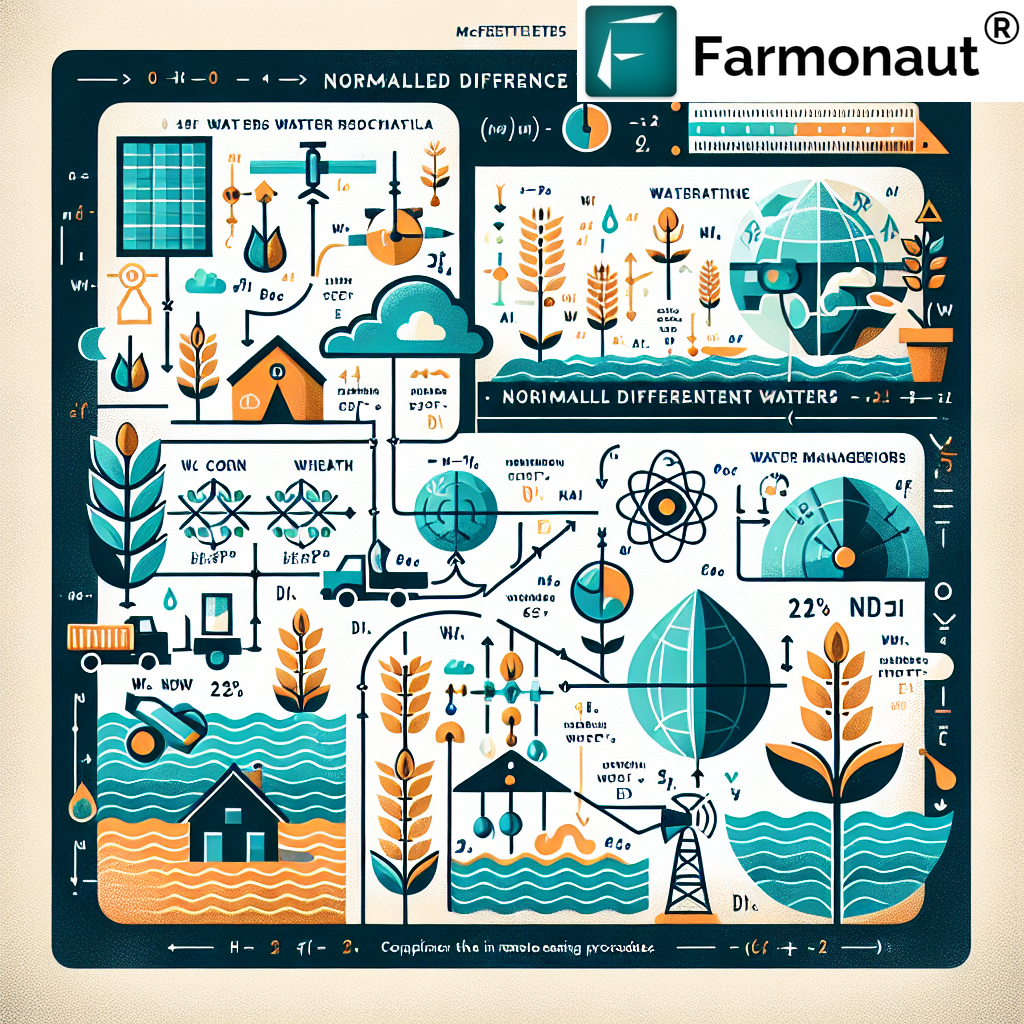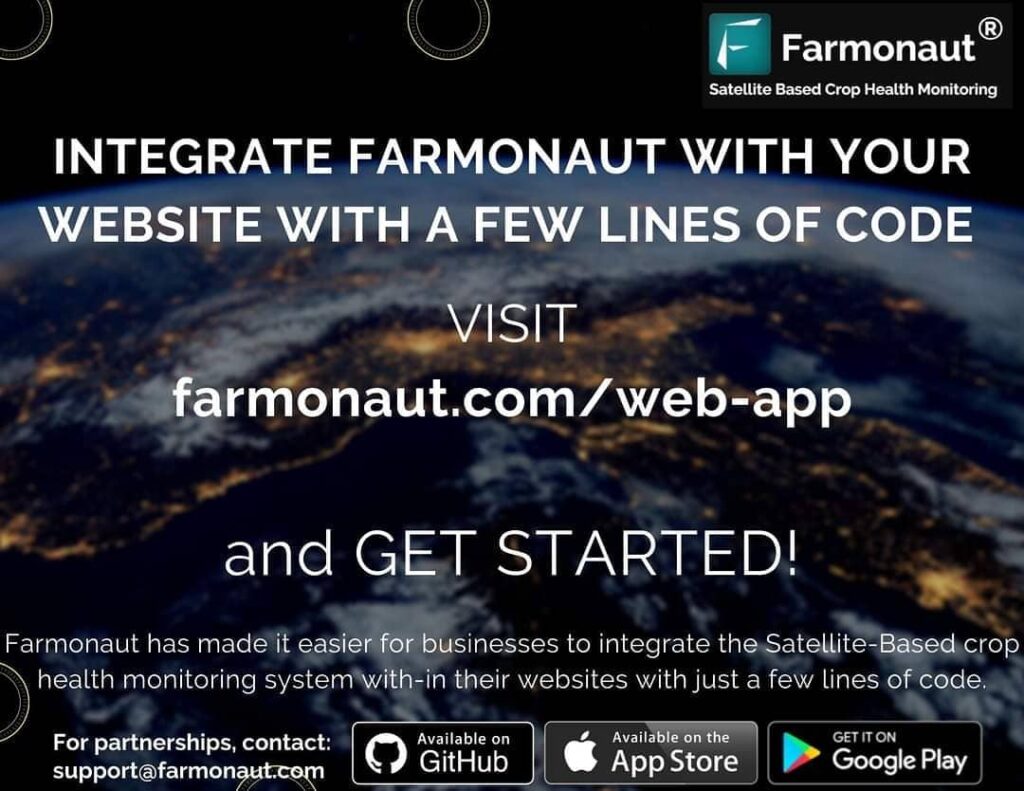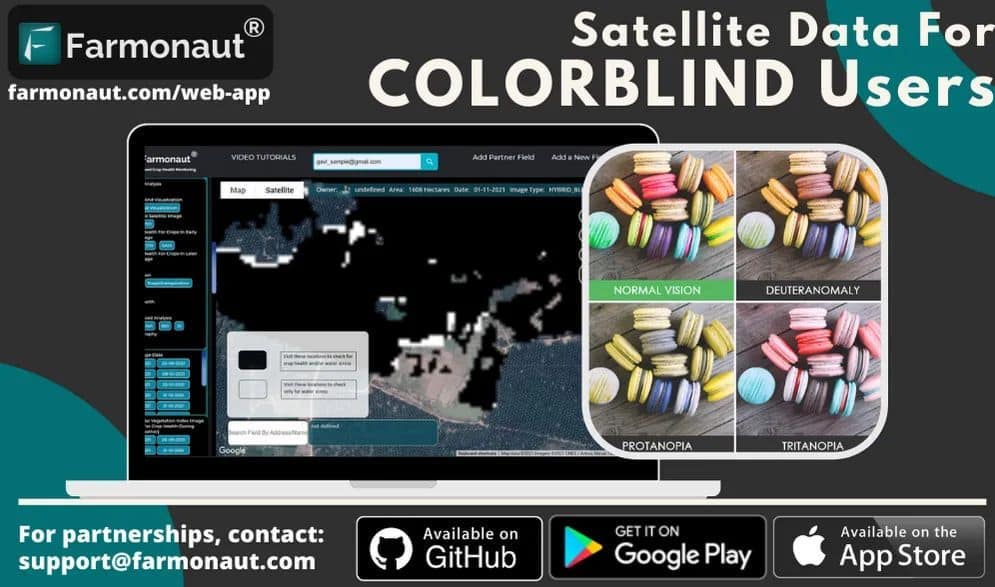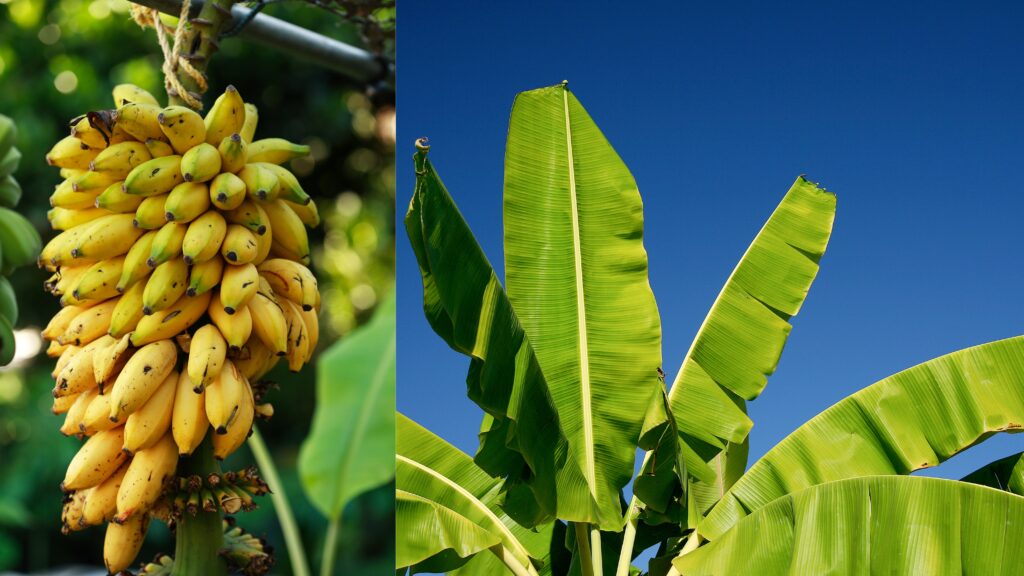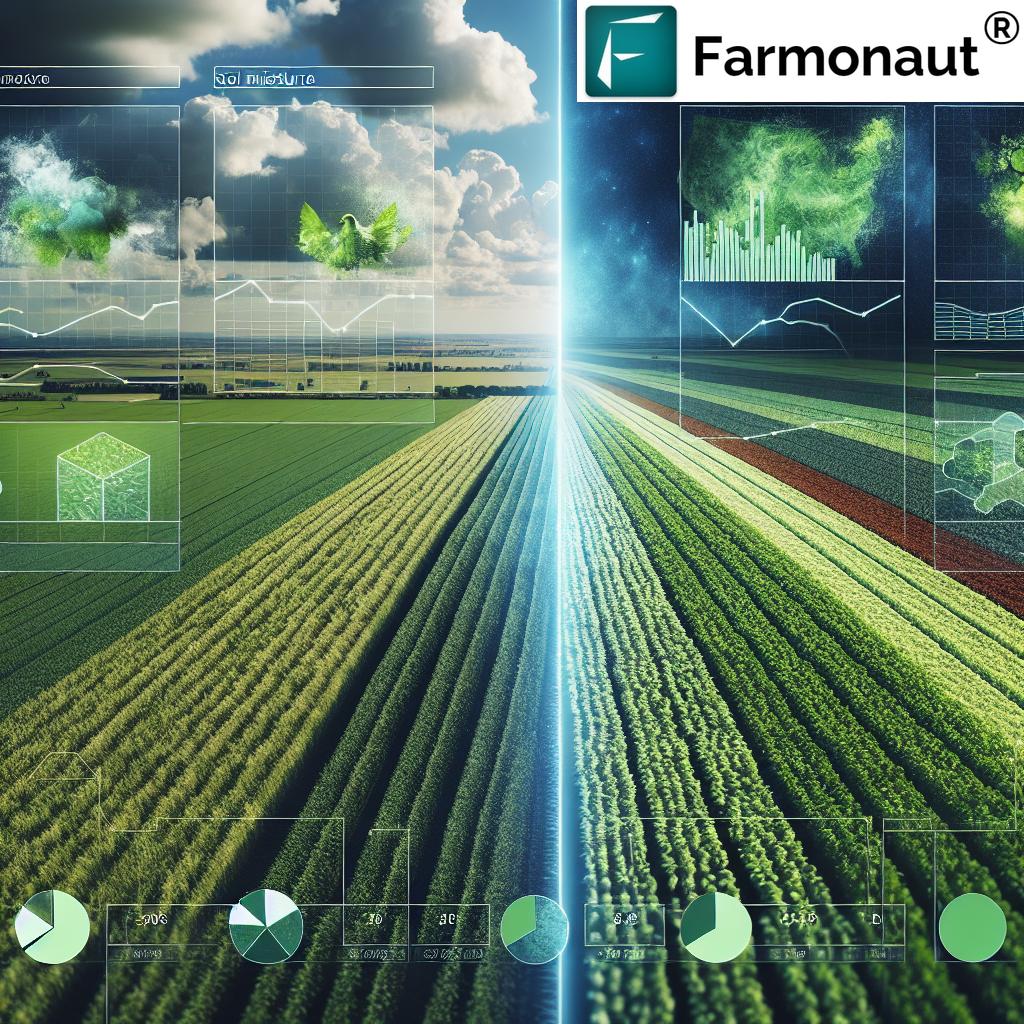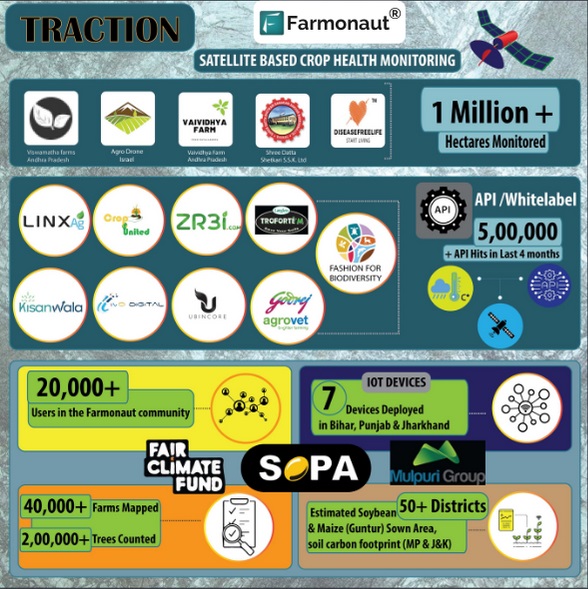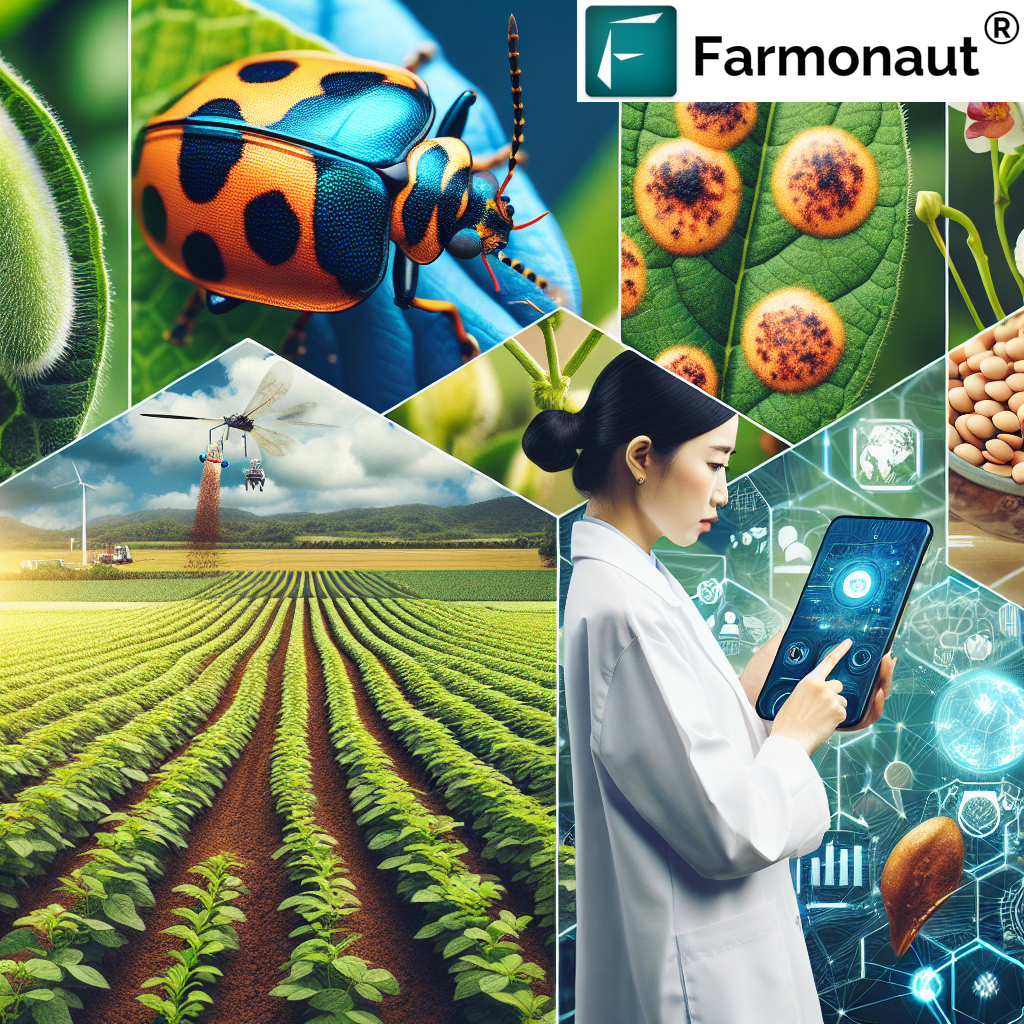
Revolutionizing Agriculture: From Pest Control to Smart Farming with GIS and Remote Sensing
In the ever-evolving world of agriculture, we find ourselves at the cusp of a technological revolution that promises to transform the way we grow, manage, and protect our crops. At Farmonaut, we’re proud to be at the forefront of this revolution, harnessing the power of Geographic Information Systems (GIS), remote sensing, and artificial intelligence to empower farmers and revolutionize agricultural practices.
In this comprehensive blog post, we’ll explore the multifaceted aspects of modern agriculture, from cutting-edge pest control methods to innovative farm management solutions. We’ll delve into the challenges faced by farmers worldwide and showcase how technology is providing solutions to these age-old problems.
Table of Contents
- The Evolution of Pest Control in Agriculture
- GIS and Remote Sensing: The New Frontier in Farm Management
- Smart Agriculture: Integrating Technology for Better Yields
- Crop Health Monitoring: From Satellite to Field
- Sustainable Farming Practices for the Future
- The Role of AI and Machine Learning in Agriculture
- Farmonaut: Leading the Charge in Agricultural Innovation
- FAQ Section
1. The Evolution of Pest Control in Agriculture
Pest control has been a critical aspect of agriculture since the dawn of farming. From ancient methods to modern innovations, the battle against crop-destroying pests has shaped agricultural practices throughout history.
Traditional Pest Control Methods
For centuries, farmers relied on manual removal, natural predators, and basic chemical compounds to protect their crops. However, these methods often fell short in the face of large-scale infestations.
The Rise of Chemical Pesticides
The 20th century saw a revolution in pest control with the introduction of synthetic pesticides. Products like chlorpropham 50 HN and Godrej pesticides became widely used, offering effective solutions against a broad spectrum of pests. However, concerns about environmental impact and pest resistance soon emerged.
Modern Integrated Pest Management (IPM)
Today, we advocate for an integrated approach to pest management that combines biological, cultural, physical, and chemical tools in a way that minimizes economic, health, and environmental risks. This approach is particularly effective against pests like Amrasca devastans (cotton leafhopper), Earias vittella larvae (spotted bollworm), and Toxoptera aurantii (black citrus aphid).
Spotlight on Specific Pests and Solutions
- Leafhoppers: These small, wedge-shaped insects can cause significant damage to crops. We recommend a combination of cultural practices, such as weed management, and targeted applications of biopesticides.
- Earias vittella larvae: This pest primarily affects cotton and okra. Our satellite-based crop health monitoring can detect early signs of infestation, allowing for timely intervention.
- Toxoptera aurantii: This aphid species can severely impact citrus crops. We suggest using predatory insects as part of an IPM strategy, supplemented with periodic monitoring using our GIS tools.
Innovative Pesticide Solutions
While we advocate for reduced chemical use, certain pesticides remain valuable tools when used responsibly. For instance:
- Profex insecticide uses include controlling a wide range of pests in various crops. It’s particularly effective against lepidopteran larvae.
- Zineb 75 WP uses extend to fungal disease control in vegetables and fruit crops. It’s a broad-spectrum fungicide that can be integrated into IPM programs.
At Farmonaut, we believe in empowering farmers with knowledge and tools to make informed decisions about pest control. Our satellite-based crop health monitoring system can detect early signs of pest infestation, allowing for targeted and timely interventions.
2. GIS and Remote Sensing: The New Frontier in Farm Management
Geographic Information Systems (GIS) and remote sensing technologies have revolutionized the way we approach farm management. These tools provide unprecedented insights into crop health, soil conditions, and overall farm productivity.
The Power of GIS in Agriculture
GIS allows farmers to create detailed maps of their fields, integrating data on soil type, topography, crop yields, and more. This spatial analysis capability enables better decision-making in various aspects of farm management.
Remote Sensing: Eyes in the Sky
Remote sensing, particularly through satellite imagery, provides a bird’s-eye view of agricultural lands. At Farmonaut, we utilize multispectral satellite imagery to monitor crop health and detect issues before they become visible to the naked eye.
The Shortwave Infrared Band
One particularly valuable tool in remote sensing is the shortwave infrared band. This spectral band is sensitive to moisture content in soil and vegetation, allowing us to assess crop health and stress levels with high accuracy.
Aplicaciones en la Clasificación de Terrenos
GIS and remote sensing play a crucial role in clasificación de terrenos (land classification). By analyzing satellite imagery and other spatial data, we can categorize land based on its suitability for different agricultural purposes, helping farmers make informed decisions about crop selection and land use.
Estimation Terrains: Precision in Land Evaluation
Estimation terrains techniques combine GIS data with advanced algorithms to provide accurate assessments of land value and potential productivity. This is particularly useful for agricultural real estate transactions and long-term farm planning.
Cane Management Software in India
In India, where sugarcane is a major crop, cane management software has become increasingly popular. These GIS-based tools help sugar mills and farmers optimize their operations, from planting to harvesting. At Farmonaut, we offer integrations with such software to provide comprehensive solutions for sugarcane farmers.

3. Smart Agriculture: Integrating Technology for Better Yields
Smart agriculture represents the convergence of traditional farming practices with cutting-edge technology. It’s about making farming more efficient, productive, and sustainable through the use of data-driven insights and automated systems.
The Role of IoT in Smart Farming
Internet of Things (IoT) devices, such as soil sensors, weather stations, and automated irrigation systems, are becoming increasingly common on modern farms. These devices collect real-time data that can be analyzed to optimize various aspects of farm management.
Farmonaut’s Satellite System vs. Drone and IoT-based Monitoring
| Feature | Farmonaut Satellite System | Drone-based Monitoring | IoT-based Monitoring |
|---|---|---|---|
| Coverage Area | Large scale (thousands of hectares) | Medium scale (hundreds of hectares) | Small scale (tens of hectares) |
| Frequency of Data Collection | Daily to weekly | On-demand (requires manual operation) | Continuous |
| Initial Investment | Low (subscription-based) | High (equipment cost) | Medium to High (sensor deployment) |
| Maintenance Required | Minimal | Regular (equipment maintenance) | Regular (sensor maintenance) |
| Data Processing | Automated (cloud-based) | Manual or semi-automated | Automated (local or cloud-based) |
| Weather Independence | High (can penetrate clouds) | Low (affected by weather conditions) | Medium (some sensors weather-dependent) |
AI-Powered Crop Management
Artificial Intelligence (AI) and Machine Learning (ML) algorithms can analyze vast amounts of agricultural data to provide insights and recommendations. Our Jeevn AI Advisory System is a prime example of how AI can be leveraged to improve farm productivity.
Precision Agriculture: Maximizing Efficiency
Precision agriculture techniques allow farmers to apply the right amount of inputs (water, fertilizers, pesticides) at the right time and place. This not only improves crop yields but also reduces waste and environmental impact.
Smart Irrigation Systems
Water management is crucial in agriculture, especially in regions facing water scarcity. Smart irrigation systems use soil moisture sensors and weather data to optimize watering schedules, ensuring crops receive exactly what they need.
Crop Monitoring Platforms
Platforms like CropMeta and CropTarget integrate various data sources to provide comprehensive crop monitoring solutions. At Farmonaut, we offer similar capabilities through our satellite-based monitoring system, which can be accessed via our Android and iOS apps.
4. Crop Health Monitoring: From Satellite to Field
Effective crop health monitoring is essential for maximizing yields and minimizing losses. At Farmonaut, we’ve developed a comprehensive system that combines satellite imagery with on-ground verification to provide accurate and timely insights into crop health.
Satellite-Based Vegetation Indices
We use various vegetation indices, such as NDVI (Normalized Difference Vegetation Index), to assess crop health from space. These indices provide valuable information about plant vigor, stress levels, and potential yield.
Detecting Early Signs of Stress
Our advanced algorithms can detect early signs of crop stress, often before they’re visible to the naked eye. This includes issues like:
- Copper spots on leaves: Often an indicator of fungal diseases or nutrient deficiencies.
- Irregular growth patterns: Which may suggest pest infestations or soil quality issues.
- Water stress: Identified through changes in plant reflectance in specific spectral bands.
Field Verification and Scouting
While satellite data provides a broad overview, field verification remains crucial. Our system generates scouting maps that guide farmers to areas of concern for on-ground inspection.
Crop-Specific Monitoring
Different crops have unique growth patterns and health indicators. For example, monitoring lentils requires attention to specific pest threats and disease susceptibilities. Our system is customized to account for these crop-specific factors.
Integration with Weather Data
Crop health is intrinsically linked to weather conditions. We integrate local weather data and forecasts into our monitoring system to provide context for observed crop health trends and to help predict potential issues.
5. Sustainable Farming Practices for the Future
Sustainability is no longer optional in agriculture; it’s a necessity. At Farmonaut, we’re committed to promoting and enabling sustainable farming practices through our technology and services.
Reducing Chemical Inputs
Our precision agriculture tools help farmers apply pesticides and fertilizers more efficiently, reducing overall chemical use. This not only saves costs but also minimizes environmental impact.
Water Conservation
Through our soil moisture monitoring and smart irrigation recommendations, we help farmers optimize water use, a critical factor in sustainable agriculture.
Soil Health Management
Maintaining soil health is crucial for long-term agricultural sustainability. Our system provides insights into soil conditions, helping farmers make informed decisions about crop rotation, cover cropping, and other soil management practices.
Carbon Footprint Reduction
We offer carbon footprint tracking tools that help agribusinesses monitor and reduce their environmental impact. This is increasingly important as consumers and regulators focus on sustainable food production.
Promoting Biodiversity
Biodiversity is essential for resilient agricultural ecosystems. Our land classification tools can help identify areas suitable for creating wildlife corridors or planting native species, enhancing overall farm biodiversity.
The Number of Trees: A Key Sustainability Indicator
The number of trees on and around agricultural land is an important indicator of environmental health. Our satellite imagery analysis can help track tree cover over time, supporting reforestation and agroforestry initiatives.
6. The Role of AI and Machine Learning in Agriculture
Artificial Intelligence (AI) and Machine Learning (ML) are transforming agriculture, offering unprecedented capabilities in data analysis, prediction, and decision-making support.
Predictive Analytics for Crop Yields
AI algorithms can analyze historical yield data, current crop health indicators, and weather forecasts to predict future yields with increasing accuracy. This helps farmers and agribusinesses in planning and resource allocation.
Automated Pest and Disease Detection
Machine learning models, trained on vast datasets of crop images, can automatically detect signs of pest infestations or diseases. This enables early intervention and targeted treatment.
Optimizing Resource Use
AI-powered systems can analyze multiple data streams to optimize the use of water, fertilizers, and other inputs. This leads to more efficient resource use and reduced environmental impact.
Crop Selection and Rotation Recommendations
By analyzing soil data, climate patterns, and market trends, AI can provide recommendations for optimal crop selection and rotation strategies, maximizing long-term productivity and profitability.
Enhancing Farm Management Software
AI is being integrated into farm management software to provide more intelligent and context-aware recommendations. For example, cane management software in India is increasingly incorporating AI to optimize sugarcane production processes.
7. Farmonaut: Leading the Charge in Agricultural Innovation
At Farmonaut, we’re proud to be at the forefront of agricultural innovation, offering cutting-edge solutions that empower farmers and revolutionize farming practices.
Our Comprehensive Platform
Our platform integrates satellite imagery, AI, and on-ground data to provide a holistic view of farm health and productivity. From crop monitoring to yield prediction, we offer a suite of tools designed to meet the diverse needs of modern agriculture.
Farmonaut Funding: Investing in the Future of Agriculture
We’re excited about the future of agriculture, and we’re not alone. Farmonaut funding initiatives have allowed us to continually innovate and expand our offerings, ensuring we remain at the cutting edge of agritech.
Scalable Solutions for Farms of All Sizes
Whether you’re managing a small family farm or overseeing large-scale agricultural operations, our ScaleFarm technology ensures our solutions can be tailored to your specific needs and scale with your business.
Empowering Farmers with Knowledge
We believe that knowledge is power in agriculture. That’s why we offer educational resources and support through our platform, including integration with services like Kisaan Helpline | Agri GIS – Smart Agriculture in India.
Building a Community: Our Social Agri Platform
Agriculture thrives on community knowledge sharing. Our social agri platform facilitates connections between farmers, experts, and agribusinesses, fostering a collaborative environment for problem-solving and innovation.
Traceability Solutions
In today’s global market, traceability is crucial. Our blockchain-based traceability solutions, which include features like “proses tracing dalam sistem traceability pada unit budidaya ikan mencakup” (tracing processes in traceability systems for fish cultivation units), ensure transparency and trust throughout the supply chain.
Continuous Innovation
We’re constantly innovating to meet the evolving needs of the agricultural sector. From enhancing our satellite imagery analysis to developing new AI algorithms, we’re committed to pushing the boundaries of what’s possible in agritech.
Join the Farmonaut Revolution
Ready to transform your farming practices? Visit our app page to get started, or explore our API offerings for developers looking to integrate our technology into their own solutions.
FAQ Section
Q1: What is Farmonaut’s main offering?
A1: Farmonaut offers a comprehensive satellite-based farm management platform that includes crop health monitoring, AI-powered advisory systems, and blockchain-based traceability solutions.
Q2: How does Farmonaut’s satellite monitoring compare to drone-based solutions?
A2: Farmonaut’s satellite monitoring offers broader coverage, more frequent updates, and lower operational costs compared to drone-based solutions. It’s particularly advantageous for large-scale farming operations.
Q3: Can Farmonaut help with pest control?
A3: Yes, our satellite-based crop health monitoring can detect early signs of pest infestations, allowing for timely and targeted interventions. We also provide recommendations for integrated pest management strategies.
Q4: Is Farmonaut suitable for small-scale farmers?
A4: Absolutely! Our ScaleFarm technology allows us to offer solutions tailored to farms of all sizes, from small family operations to large agribusinesses.
Q5: How does Farmonaut contribute to sustainable farming?
A5: Farmonaut promotes sustainability through precision agriculture techniques that optimize resource use, reduce chemical inputs, and minimize environmental impact. We also offer carbon footprint tracking tools.
Q6: What types of crops can Farmonaut monitor?
A6: Our system is designed to monitor a wide range of crops, including grains, fruits, vegetables, and cash crops like cotton and sugarcane. We continually update our algorithms to improve crop-specific monitoring capabilities.
Q7: How can I access Farmonaut’s services?
A7: You can access our services through our web platform, mobile apps (available for Android and iOS), or by integrating our API into your existing systems.
Q8: Does Farmonaut offer solutions for livestock farming?
A8: While our primary focus is on crop farming, we do offer solutions that can benefit livestock operations, such as pasture management and feed crop monitoring.
Q9: How accurate is Farmonaut’s crop yield prediction?
A9: Our yield prediction models combine satellite data, historical yields, weather information, and AI algorithms to provide highly accurate estimates. The accuracy continues to improve as our AI learns from more data over time.
Q10: Can Farmonaut help with crop insurance claims?
A10: Yes, our satellite-based monitoring can provide objective data on crop health and potential losses, which can be valuable for verifying insurance claims. We work with several insurance providers to streamline this process.
At Farmonaut, we’re committed to revolutionizing agriculture through technology. From advanced pest control strategies to satellite-based crop monitoring, we’re empowering farmers to make data-driven decisions that improve yields, reduce costs, and promote sustainability. Join us in shaping the future of farming!


